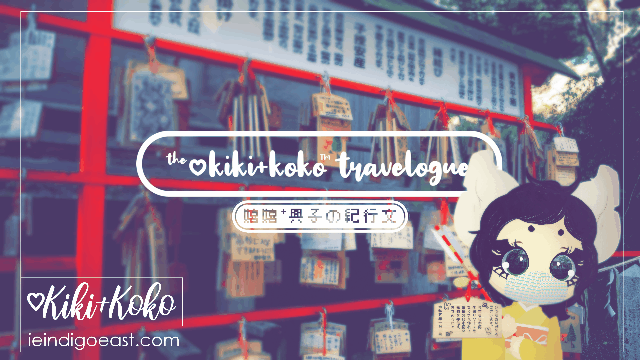
HELLO! I AM QUIZBO™!I am here to welcome you to and guide you through the wonderful world of Word of the Week Wednesday. You may or may not recognise me as your personal reading assistance and quiz creator from Kiki+Koko: Let’s NihonGO!! Online. If this is your first time visiting, I hope that I will be able to continue to assist you on your Japanese language learning journey or simply give you an interesting new perspective and a hopefully enjoyable experience. There was a time that was not so long ago when this segment did not exist. Before the creation of Word of the Week Wednesday, there was a gap betwixt Monday and Friday Japanese lessons and articles that could have left some with too much time. When learning a language, it is important to keep vocabulary and grammar in your mind. Though, you do not have to spend each and every day learning something new, though it can be useful. The point of this is to give those who want to learn more another opportunity to learn a bit of vocabulary and grammar along with giving them an opportunity to practise the things they have learned. Though, for those who already have enough on their proverbial plate, this stands as a vitally important reminder to return to previous lessons and revise / study. Whilst it is important to move forward and learn more, accumulating more knowledge, it is almost more important to be sure you have a grasp of the previous concepts. The reason why this is so important is because many lessons build upon one another, and having extraneous ideas you do not have properly encoded into your memory or do not feel comfortable using can result in frustration, holding you back even when you think you may be ready for the next lesson. Though it is useful to continue to push yourself forward and experience ideas outside of your comfort zone, again, it is simply important to go back and make sure you understand previous concepts. And, even still, when you do find you are comfortable, one cannot take that for granted! Sometimes ideas can slip away if not properly within your memory. That is why we try to promote as many useful ways to learn as possible, engaging as many of your senses as possible to give you the best chance of learning and being able to utilise the materials naturally in future. But, perhaps, after all of this, you wonder what exactly is Word of the Week Wednesday and why is it useful every day of the week?

If you would like to learn how to apply these words to your own basic sentences, feel free to take a look at a few of Kiki and Koko’s articles on this subject in Kiki+Koko: Let’s NihonGO!! Japanese Language Essentials.
Well, during the segment, I will introduce to you a Japanese word or phrase that may be new to you. You will be given the translation as well as the definition of the word as necessary along with its part of speech, romanisation, the hiragana pronunciation, as well as the proper kanji when applicable. However, I do not simply give you the writing and leave it at that. I also am here to read it aloud for you as many times as you wish, reading out each hiragana. This means if there is 長音, chouon, you’ll know which hiragana are used to make that blended sound. And, it does not matter how many times you require my services. Again, I will read out the word or phrase as many times as you wish, day or night. I mention this because you may be in a location where you may not be comfortable reading aloud, but it is important to repeat after me in order to engage more of your senses and practise your pronunciation for the best and most useful learning experience possible.
Even though this may seem like plenty of learning for one session, there are actually many more opportunities hidden in plain sight. For each word, there will be sentence(s) provided that should help you to form more connections mentally to said word or phrase. The concepts should hopefully solidify the meaning and usage at least somewhat for beginners. You are not required to repeat after these sentences as a beginner, however. This is meant to be used as a way to isolate the word in the sentence at regular speaking speed as a beginner. Isolating vocabulary within sentences is an important part of learning and future immersion; otherwise, activities such as listening to native speakers or television programmes will end up being a wall of sounds without any useful way of sussing anything out. That is why these sentences are there to also assist you with examples of sentence structure and grammar. This can help you to create your own sentences, as well. You can practise your handwriting, grammar, and composition skills all in one, along with reading practice if you cover each line before looking at the romanisation.

Enter and reveal a world hidden in plain sight with our Japanese language and culture lessons and articles.
Reading and writing is an essential part of language learning, if you plan to become fluent because as you progress through the language, this will become something necessary in so many aspects of learning. And, anyone who wants to learn a brand new language probably does not want to have something holding them back from making things progress more smoothly. So, again, because it is written in its original kanji, hiragana,and katana, as well as just hiragana, and romanisation, you can use it as a way to practise your romanised Japanese computer input, hiragana writing and reading, or even further beyond. But, if you have not begun learning to read, no worries! We have all that you need in our reading and writing section found at the link to the right of this text.
Whilst all of this would normally be enough, today we also have Kiki and Koko, here, to give you a bit of assistance with their Helpful Hints.
Without further ado, let us NihonGO!!
Word(s) of the Week:
発音【はつおん】
hatsuon
noun (名詞), suru verb (「名詞+する」の動詞)
1. pronunciation; to pronounce (+する)
2. phonation
jlpt n4| common word (常用語)
Bonus Word(s) of the Week:
発音記号【はつおんきごう】
hatsuonkigou
noun
1.phonetic symbol (音声記号)
jlpt n?| common word (常用語)
Stay tuned for Helpful Hints with Kiki+Koko, right after these messages!
We hope that was of interest to you. Now, on to the Helpful Hints!
※Helpful Hints with Kiki+Koko

Photo via @kikikokoNihonGO on Twitter
Hello, there!
We’re Kiki and Koko! You may recognise us from such internet teaching sites as Kiki+Koko: Let’s NihonGO!! Online! During Mondays and Fridays, we provide you with full lessons to bolster your Japanese language and culture skills, but on Wednesdays, we’re here to hopefully just give you a few helpful hints, allowing you to learn something new whilst still giving you enough time to revise or study previous lessons. Because today is primarily two nouns, with a bit of an extra flair of a suru-verb, in which the noun becomes a verb by adding ‘suru’, sort of like adding ‘ing’ to something that is a verb in English. But, today, some may wonder what exactly 発音記号, hatsuonkigou, means. If you’re already into 言語学, this may be something you know about. But, now, at least you have the vocabulary to talk about it in Japanese! However, for those who don’t quite know what this means, we’re here to give you a quick definition. In future, we may go in depth with this, but for now, this should be a quick helpful hint.
So, Japanese itself has its own phonetic characters such as hiragana and katakana. However, today’s vocabulary refers to what may otherwise be known as ‘IPA’ or the ‘International Phonetic Alphabet’ or 国際音声記号, kokusai onseikigou. Whilst romanisation exists for a similar reason, these latin/roman letters aren’t pronounced the same way all over the world. That is why we have 発音記号, hatsuonkigou!
Each language has a different way they pronounce their own characters or even if they use the ‘English’ alphabet, again, they have their own way of saying it. So, when it comes to tracking an exact way something is pronounced, or 発音させた, hatsuon saseta, there is a plethora of very specific phonetic symbols that, when learned properly, are a gateway into learning almost every sound the human mouth can make! Learning every symbol can be a daunting task for even practical and theoretical lexicographers alike, but it’s a way that allows a window into any and every pronunciation.
For example, today’s main vocabulary word would normally be romanised as ‘hatsuon’, which only gives part of the story for new language learners if they don’t have proper access to audio. One could think it was pronounced ‘hat-suon’ or ‘hats-on’ based on someone’s limited knowledge of Japanese pronunciation. Though actually learning how to read the words in their original script is the point, the point of this IPA is to show the pronunciation regardless of reading level. So, instead, you’ll get a much more fleshed out pronunciation as:
発音→ 「ha/tsɯᵝoɴ‾」
Each symbol shows the general pronunciation, which can change from dialect to dialect, but can still be useful. But, of course, if you’re not planning on becoming a linguist or learning other accents or dialects, then it would probably be best to spend your time simply learning how to read kana then kanji rather than spending time on an entirely new script that is used only be linguists. But, if you’re very into 言語学, then it could prove to be the beginning of a fun second type of language learning journey!
We hope that helps!! Until the next lesson!
♡Kiki+Koko
Do not go away! We will be right back with important example sentences after these messages!
Thank you, Kiki and Koko. 国際音声記号, kokusai onseikigou, is something that would certainly be important for anyone looking to learn multiple languages or to become a linguist. Learning is always rewarding, even if it is simply to understand your own language, better. But, indeed, I can concede that if you have limited time, it would be best to spend it learning what will assist you on your journey. Though pit-stops can be fun. At any rate, let us continue to the sentence portion!
Example Sentences:
The first row is in Japanese with Kanji. The Next row is in hiragana, then romanised using rōmaji with the final row translated into English.
(Japanese→Hiragana→Rōmaji→English)
Example #1:
[basic polite speech]
言語学者か 俳優なら、発音記号で訛りか方言とか学びに有用なのだと思います。
げんごがくしゃか はいゆうなら、はつほんきごうで なまりか ほうげんとか まなびに ゆうようなのだとおもいます。
gengogakusha ka haiyuunara, hatsuonkigou de namari ka hougen toka manabi ni yuuyounanodato omoimasu.
if you are a linguist or an actor, I think that phonetic symbols are useful for learning (things like) accents and dialects.
Example #2:
[casual speech]
パオロくんの日本語が上手だが、発音はブラジルなまりっぽいだなぁ。折々にわかりにくいだが、頑張っているそうだから、パオロ君を 誇りに思うわ。
ぱおろくんの にほんごが じょうずだが、はつおんは ぶらじるなまりっぽいだなぁ。おりおりにわかりにくいだが、がんばっているそうだから、パオロ君をほこりにおもうわ。
paorokun no nihongo ga jouzu da ga, hatsuon wa burajiru namari ppoi danaa. oriori ni wakarinikui da ga, ganbatteirusoudakara, paorokun wo hokori ni omou wa.
Paolo’s Japanese is good, but his pronunciation is Brazilian-ish. It’s hard to understand from time to time, but he seems to be working hard, so I’m proud of Paolo.
Example #3:
[basic polite speech]
日本語の発音をちゃんと習うに まずはひらがなを読むのを 勉強しておくべきです。進んでいると、貴重なものでしょう。
にほんごのはつおんを ちゃんと ならうに まずは ひらがなをよむのを べんきょうしておくべきです。すすんでいると、きちょうなものでしょう。
nihongo no hatsuon wo chanto narani mazu wa hiragana wo yomu no wo benkyou shiteoku bekidesu. susundeiruto, kichouna mono deshou.
To learn Japanese pronunciation properly, you should first learn to read hiragana. It will be invaluable as you are progressing.
That is all for today, but you can always have a look at any of our other lessons. Maybe you are interested in another Word of the Week? Perhaps this will be to your liking: 🔊Japanese Word(s) of the Week w/ QUIZBO™ | 【読む】+BONUS:【書く】(+Helpful Hints with Kiki+Koko + Companion Lessons ) This includes some useful verbs, and Kiki and Koko provide their helpful hints for 読む and 書く along with some other lessons that may assist you in your Japanese language learning journey. But, maybe you would like to see our selection of past Word of the Week segments. If you may already be familiar with the vocabulary, you can also use it for sentence inspiration, writing practise, or just to enjoy. Feel free to invite your friends and family so you can have even more learning companionship. Either way, we’ll be here to assist you with any questions you have! We hope to see you there!

Grooving to the content we’re creating? You can leave a TIP in the TIP♡JAR to keep it going!
(Can’t? No worries! The content is free for everyone! We’re just glad you’re here!!!)
Be sure to subscribe to our Electronic Mailing List of Tomorrow, today, using the form at the bottom of the web page so you can be the first to see the latest from Kiki+Koko: Let’s NihonGO!!, Indigo East, and SpeRaToBo. And, remember to return back to previous articles and lessons to review/revise.
Also consider following our new page on Twitter and Instagram to support the spread of this site in a friendly domination of Earth that will help more people. Or, if you are enjoying the content that we are creating, or want to spread this content to more people to be able to access it for free whilst combating the rampant theft we mentioned, you can leave a TIP in the TIP♡JAR to keep it going. If you cannot, then no need to worry. We are just super happy that you are here! It is appreciated!
Thank you so much for learning with us!
♡QUIZBO™






Follow SpeRaToBo || ieindigoeast on WordPress.com






























4 replies »